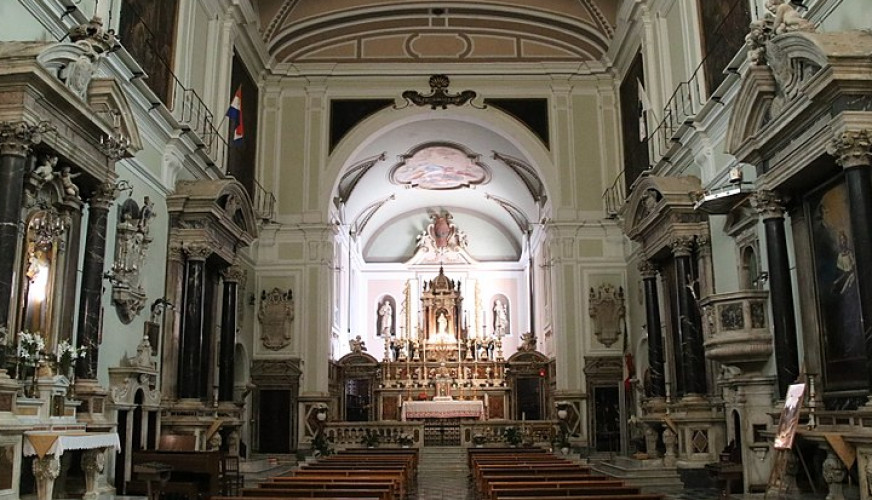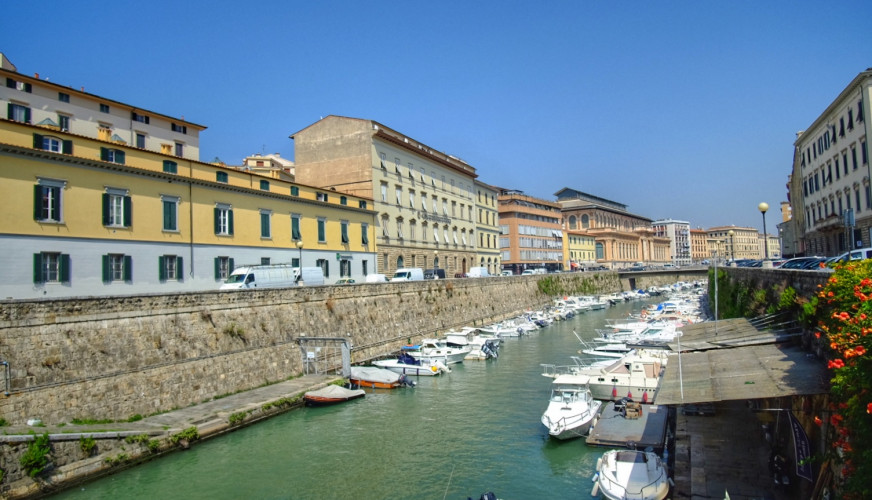Via della Madonna and multicultural Livorno
Tappa
Tappa
Via della Madonna and multicultural Livorno
A city with a unique history
To fully understand the unique cultural context that brought Modigliani to present himself with in an extraordinarily innovative way in the art world, we need to take a step backwards, to the time when this port city was founded, on the wishes of the Medici family, at the end of the 16th century.
The history of Livorno begins almost at the same time as that of its “Nations”. It was 19th February 1591, in fact, when the Grand Duke of Tuscany published a decree that would change the history of this nascent Livorno community:
“His Serene Grand Duke... To all merchants of any Nation, Levantines, Ponentines, Spanish, Portuguese, Greek, Germans, Italians, Jews, Turks, Moors, Armenians, Persians, greeting you all... For his desire to grow the heart to foreigners to come and frequent their trade, and merchandise in his beloved City of Pisa and Port of Livorno and live there, in the hope that that it will be useful to the whole of Italy, our subjects and the poor...”.
This appeal was aimed at merchants of the Mediterranean and substantially promised freedom of worship, of religious and political profession, the cancelling of debts and other convictions for at least 25 years, established a customs system to the advantage of goods destined for export and guaranteed the freedom to carry out any trade, as long as the merchants lived in Livorno: measures that created exceptional conditions for development and a multicultural, tolerant society.
To fully realise how extraordinary this model was for the time, we can take a walk down Via della Madonna.
The street's origins date back to the second half of the sixteenth century, with the city’s pentagonal urban form designed by Bernardo Buontalenti. The street is orthogonal to the main street which was Via Ferdinanda, the road was part of a regular street network that city-fortress that was Livorno.
From the beginning of the 17th century, different Roman Catholic communities had their reference point here in the Church of the Madonna. Next door, the Byzantine Greeks built their Church of the Santissima Annunziata, while a century later, the Armenians were also allowed to build their own place of worship on Via della Madonna, a road in Livorno that had become the symbol of the city of “Nations”. There were three national churches here, reference points for Greek, Dutch-German, French, Portuguese, Corsican and Armenian communities. It was defined to be a “European historical-religious unicum”, or rather a symbol of cosmopolitism that characterised the city of Livorno for over three centuries, thanks to the forward-thinking policy of the Medici Grand Dukes.
At the start of the seventeenth century, the Church of the Madonna (1607, next door to the pre-existing Oratorium of Santi Cosma e Damiano, that no longer exists) and that of the Santissima Annunziata (1601). The first became a reference point for the French, Dutch-German, Corsican and Portuguese communities; the relative national altars were erected inside, that were often used a real burial grounds by the communities, as part of their Catholic religion. The second came a century later, in 1714. The Church of San Gregorio was inaugurated, on the wishes of the wealthy Armenian nation and also used as a burial ground for many co-nationals. The pre-existing small church of Santi Cosimo and Damiano stood next to the church, which was later turned into a post office.
For about three centuries, the Nations made Livorno one of the most flourishing trading and commercial hubs in the Mediterranean, linking its name not only to financial and commercial institutions, palaces and suburban villas, but also to the city’s political and social life, as well as public works and charity, such as theatres, kindergartens and schools.
The path for non-catholic Christians, like the English, was difficult, who finally had their own Nation, churches and cemeteries.
The last significant chapter of the Nations occurred around the middle of the nineteenth century, when the non-catholic/protestant English, Scottish and the Dutch German Congregations (which at the time mostly brought together Swiss and Germans) could finally build their own churches, of suitable size and splendour for the importance achieved by the respective communities.
(Source: Wikipedia)
Mappa
Livorno
Via Della Madonna
provincia di Livorno
Via Della Madonna
provincia di Livorno



